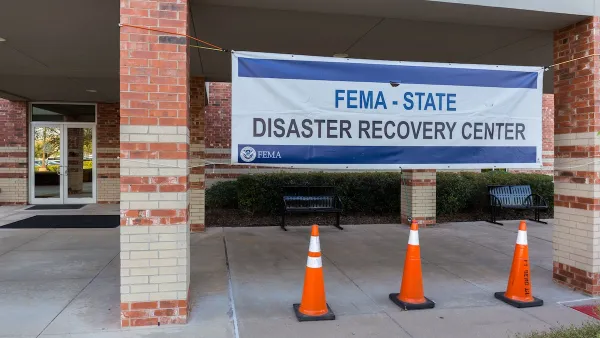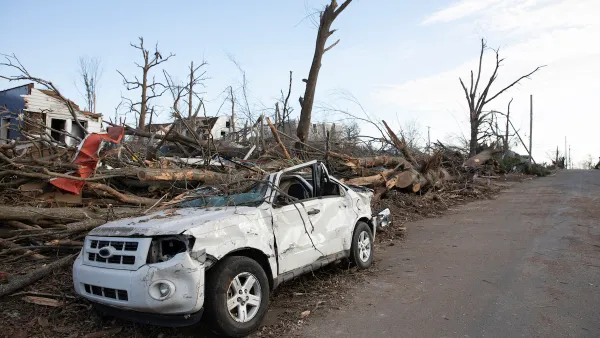Using post-Sandy New York as a case study, C.J. Hughes looks at the extent to which architects can be helpful in the immediate aftermath of a natural disaster.
Thousands of homes in the New York region were destroyed by Hurricane Sandy, but "architects eager to help rebuild have little to do, at least when it comes to anything requiring their professional skills." Even though structural damage assessments will be needed later, the priority in the weeks following Sandy have been clearing debris, delivering food, and helping people. "There is a real need for people on the ground right now, and there will be for months," said John Cary, a design consultant who co-founded the nonprofit Public Architecture and runs the site Public Interest Design. Eric Moed, a Brooklyn designer, and his group People's Relief have been delivering care packages to elderly residents in Coney Island. "I would tell any architect out there to put on some boots, grab a broom, come here, and be ready to walk upstairs," he said. "We should table the golden-ratio discussions for another three to four months."
Before the rebuilding process begins, suggests Thomas Thomas, a founder of the relief group Staten Island Strong, architects can register with the Federal Emergency Management Agency for proper identification. Relief efforts towards long-term rebuilding are being coordinated by organizations like AIA New York, which is offering safety assessments by architects, and Architecture for Humanity, which is collecting donations, offering design help, and training architects for disaster relief. "One potential hitch: Architects aren't legally allowed to perform damage assessments as volunteers," says Hughes. "New York doesn't currently have any "good Samaritan" laws to protect them against any future lawsuits, like many states do." However, Cary hopes that architects and designers will still help with the effort and said, "I would hate to think architects are sitting around because of lack of Good Sam laws."
FULL STORY: Are Architects Useful After Natural Disasters?

National Parks Layoffs Will Cause Communities to Lose Billions
Thousands of essential park workers were laid off this week, just before the busy spring break season.

Retro-silient?: America’s First “Eco-burb,” The Woodlands Turns 50
A master-planned community north of Houston offers lessons on green infrastructure and resilient design, but falls short of its founder’s lofty affordability and walkability goals.

Delivering for America Plan Will Downgrade Mail Service in at Least 49.5 Percent of Zip Codes
Republican and Democrat lawmakers criticize the plan for its disproportionate negative impact on rural communities.

Test News Post 1
This is a summary

Test News Headline 46
Test for the image on the front page.

Balancing Bombs and Butterflies: How the National Guard Protects a Rare Species
The National Guard at Fort Indiantown Gap uses GIS technology and land management strategies to balance military training with conservation efforts, ensuring the survival of the rare eastern regal fritillary butterfly.
Urban Design for Planners 1: Software Tools
This six-course series explores essential urban design concepts using open source software and equips planners with the tools they need to participate fully in the urban design process.
Planning for Universal Design
Learn the tools for implementing Universal Design in planning regulations.
EMC Planning Group, Inc.
Planetizen
Planetizen
Mpact (formerly Rail~Volution)
Great Falls Development Authority, Inc.
HUDs Office of Policy Development and Research
NYU Wagner Graduate School of Public Service




























